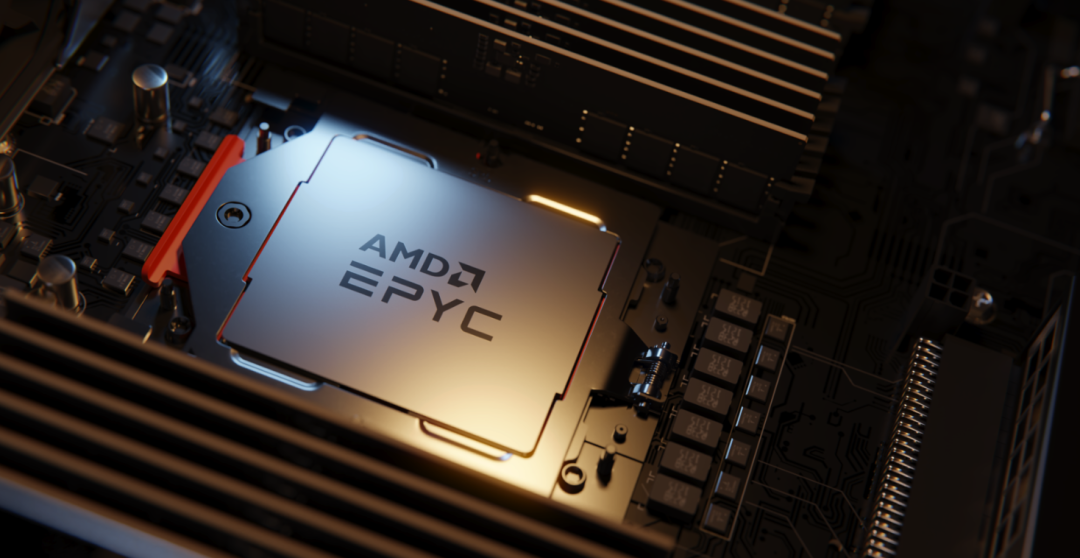AMD Set to Evenly Compete with Intel in the Server CPU Market
In recent years, AMD's ascent in the server CPU market has been reshaping the data center industry's landscape. With their impressive performance and cost-effectiveness, EPYC processors have been gradually eroding Intel's traditional stronghold. Market analyses suggest that by the first quarter of 2025, AMD's server CPU market share could approach 40%, with projections to match Intel's share by 2026. This accomplishment signifies AMD's dramatic transformation from a minor player to a crucial force within the data center sector in just a few years.

AMD's breakthrough traces back to 2017 when its server CPU market share was negligible, and it was lacking competitive products. The strategic overhaul initiated under CEO Dr. Lisa Su included the launch of the EPYC processor line built on the Zen architecture. With the introduction of the first EPYC "Naples" processor in 2017, AMD swiftly established its presence in the workstation and server markets, credited to its high core count, robust multi-threaded performance, and enhanced power efficiency. Subsequently, AMD continued to evolve its EPYC series, releasing processors based on Zen 2, Zen 3, and Zen 4 architectures, featuring up to 128 cores for various workloads including cloud computing, high-performance computing (HPC), and artificial intelligence (AI). For instance, the EPYC "Genoa" processor, unveiled in 2022, employs the Zen 4 architecture, offering up to 96 cores and DDR5 memory support, thus boosting virtual machine density and data processing capabilities. By 2024, the fifth generation of EPYC processors further refined performance specifically for AI workloads, significantly strengthening AMD's position in the data center market.
Changes in market data confirm AMD's achievements. By the second quarter of 2024, AMD's server CPU shipment share reached 24.1%, and its revenue share soared to 33.7%. By the first quarter of 2025, its revenue share had climbed to 39.4%, marking a 6.5% year-over-year increase. This growth is attributed not only to the technical prowess of the EPYC processors but also to AMD's strategic production choices. AMD has leveraged TSMC's advanced manufacturing processes, like the 5nm and 4nm nodes, ensuring both performance and production reliability. In contrast, Intel's struggles with its manufacturing bottlenecks have delayed the launch of certain server CPU products, diminishing their market competitiveness.

While Intel retains its leadership position in the server CPU market, it has been beset by several challenges. In Q3 2024, Xeon processor shipments rose by 15.3% year-on-year to 4.09 million units, but revenues declined by 1.4% to $3.51 billion, illustrating the pressure on Intel's pricing and gross margins. Intel's "Granite Rapids" and "Sierra Forest" Xeon processors attempted to counter AMD with a blend of high-performance and energy-efficient cores, yet market reactions revealed a stronger preference for AMD's EPYC processors among enterprise clients, thanks to their superior price-performance ratio and customization potential. Furthermore, Intel's progress in AI has fallen behind, with the Gaudi AI chips missing revenue expectations.
AMD's success has been bolstered by broader trends within the data center industry. There's a growing need for high-performance, energy-efficient processors as demand surges for AI, cloud computing, and big data solutions. EPYC processors demonstrate unique strengths in these fields, with their high-core designs significantly enhancing virtualization efficiency and cutting data center operational costs. Moreover, EPYC processors embrace cutting-edge features like PCIe 5.0 and Compute Express Link (CXL), adding flexibility for speedy storage and memory expansion. These capabilities have made them particularly attractive to cloud service providers and enterprise customers, resulting in more than 950 EPYC-based public cloud instances worldwide.
AMD's rise has also been facilitated by Intel's strategic missteps, which have opened market opportunities. Intel's leadership changes and organizational restructurings have slowed the update rhythm of their server CPU lineup. For example, delays in the Sapphire Rapids processor due to production issues have allowed AMD to gain a foothold with rapid iterations. Moreover, Intel's gradual loss in pricing competitiveness, particularly in AI server solutions, has led customers to favor the more cost-effective EPYC processors for balancing the high costs of GPUs, memory, and network accelerators.

Looking ahead, AMD's growth momentum is poised to continue. The forthcoming EPYC "Venice" processor, based on the Zen 5 architecture, is anticipated to further enhance performance in 2026 by supporting FP6 and FP4 floating-point operations, meeting escalating demands for AI and high-performance computing. Simultaneously, AMD is intensifying its investment in the software ecosystem, such as optimizing the ROCm platform to improve GPU and CPU synergy. These initiatives will further cement AMD's standing in the data center.
However, Intel's enduring market foundation and technological strength remain significant, with a global data center shipment share still hovering around 75%. As Intel ramps up investments in AI and high-performance computing, the future competitive scenario remains fluid. Additionally, the rise of Arm-based server CPUs, anticipated to grow their market share from 8% in 2024 to 15% in 2025, presents a potential challenge to both AMD and Intel.
AMD's combined advantages in performance, energy efficiency, and cost with EPYC processors have been pivotal to its transformation from a marginal player in 2017 to an industry titan today. The competition between AMD and Intel in the server CPU market is set to intensify heading into 2026, propelling not only technological advances but also fostering innovative choices within the data center industry.
Related News
- AMD Unveils Future Plans: Introducing Zen7 Architecture and MI500 Series
- AMD Launches New Instinct MI350 AI Accelerator
- NVIDIA Plans to Launch Next-Generation Rubin Accelerators in September
- AMD Unveils New Zen5 Processor
- TSMC Completes Trial Production of 2nm Process with an Impressive 90% Yield
- Intel Confirms Nova Lake Processors, Adopting 14A Process Technology
- Intel Unveils Three New Xeon 6 Processors
- AMD Officially Launches the Zen5 Series Threadripper
- GIGABYTE Launches AI TOP ATOM Desktop Supercomputer Delivering 1000 TOPS Performance
- Intel Official Website Unveils Arc B750 Graphics Card